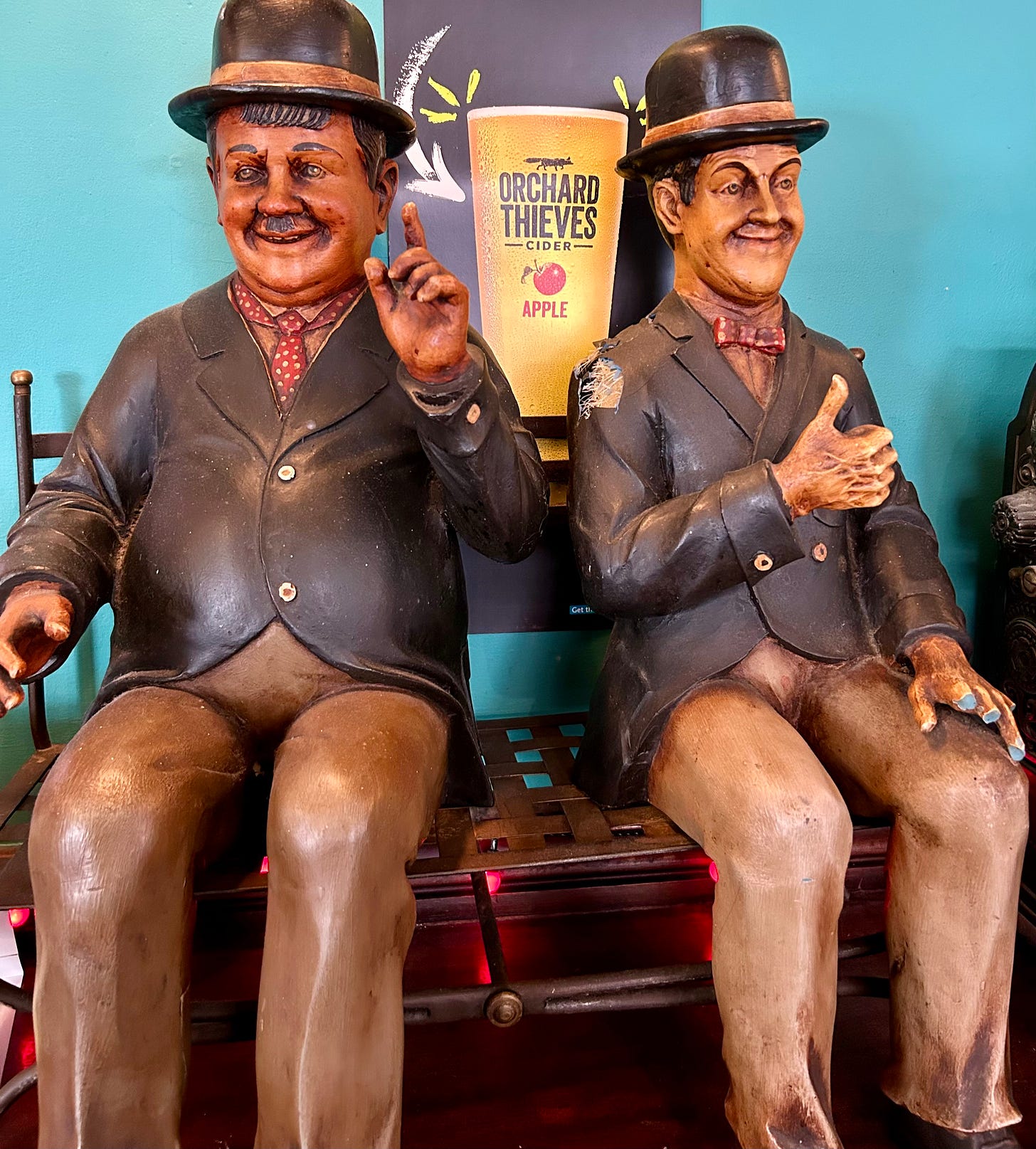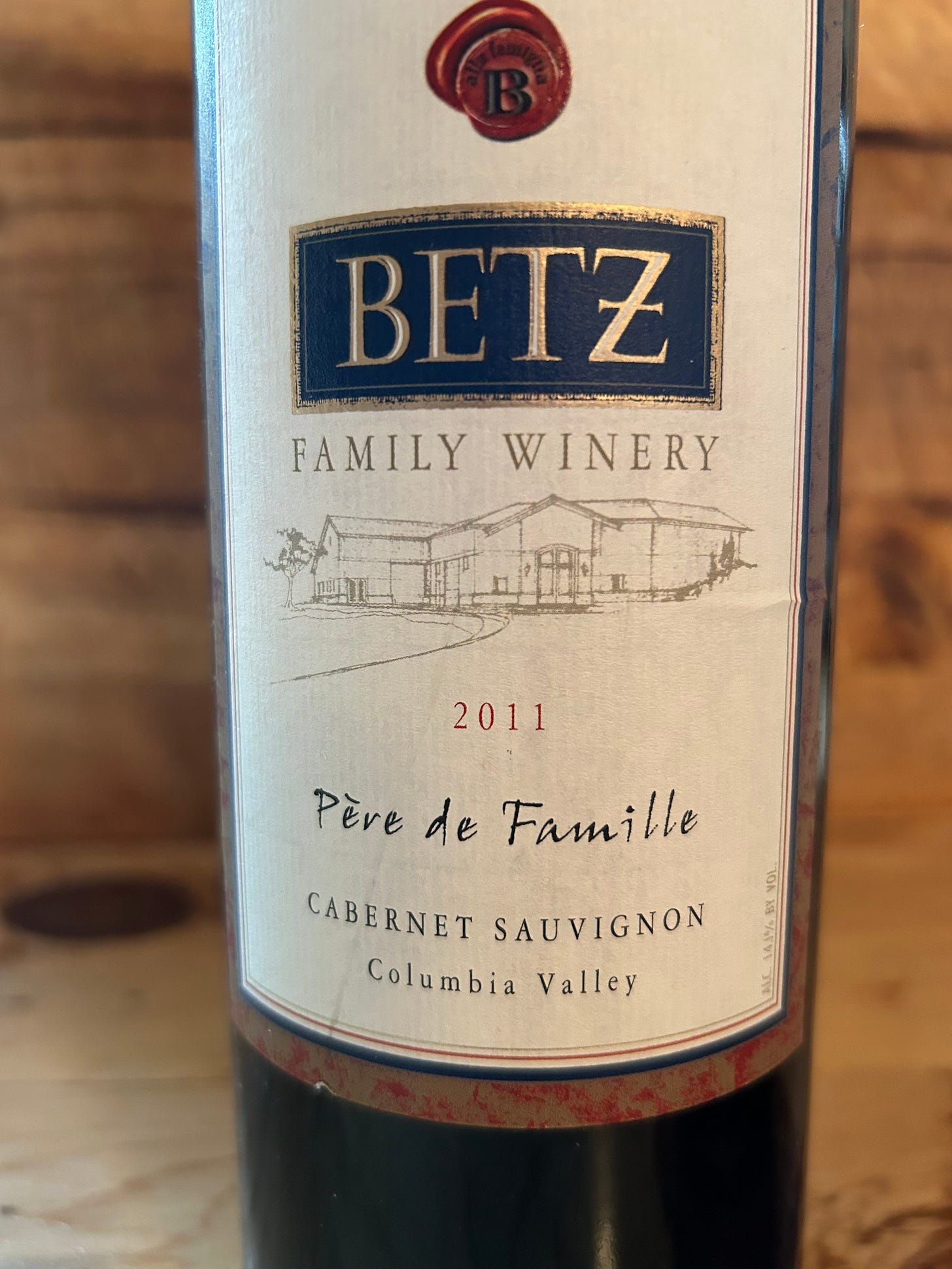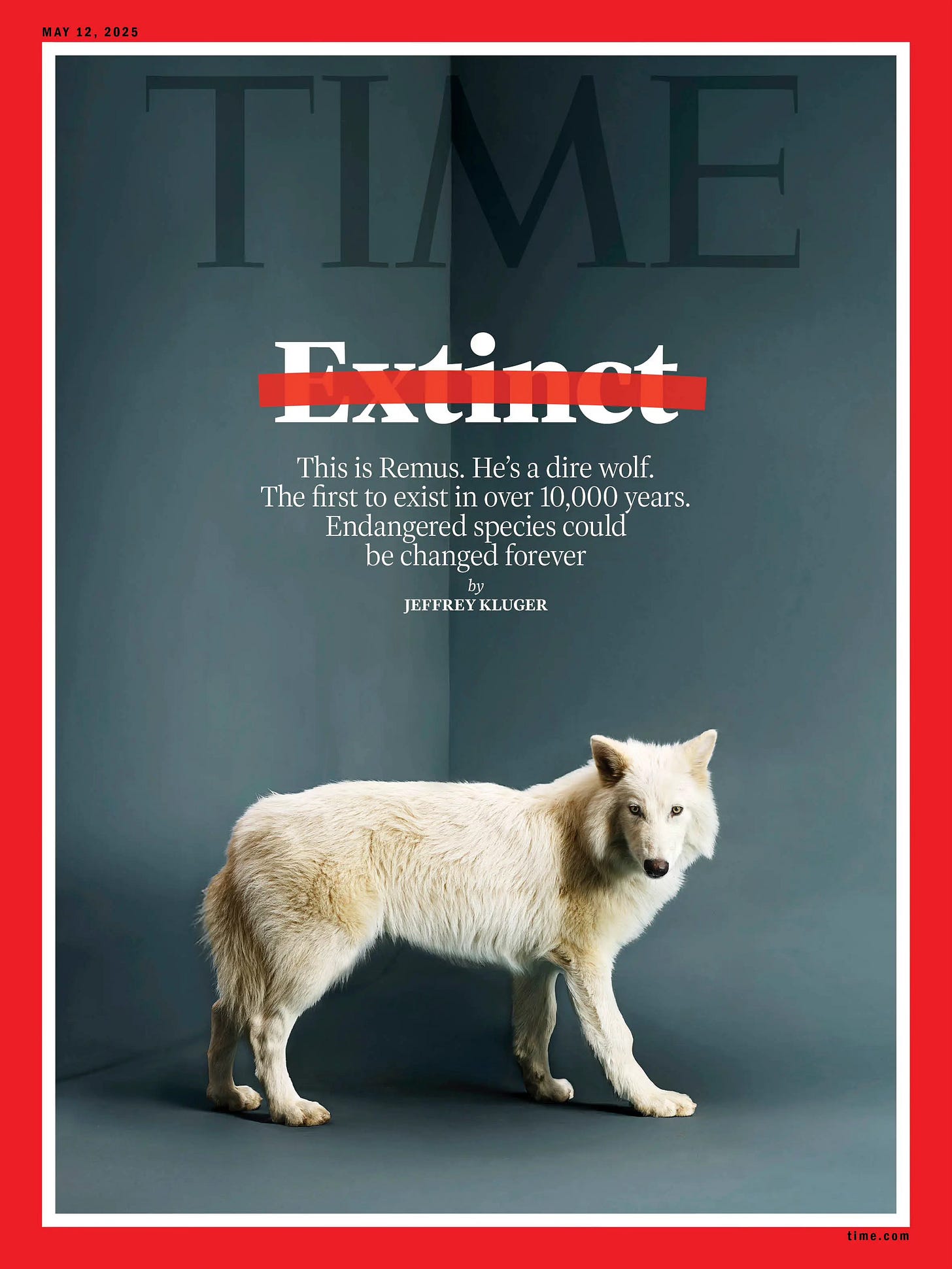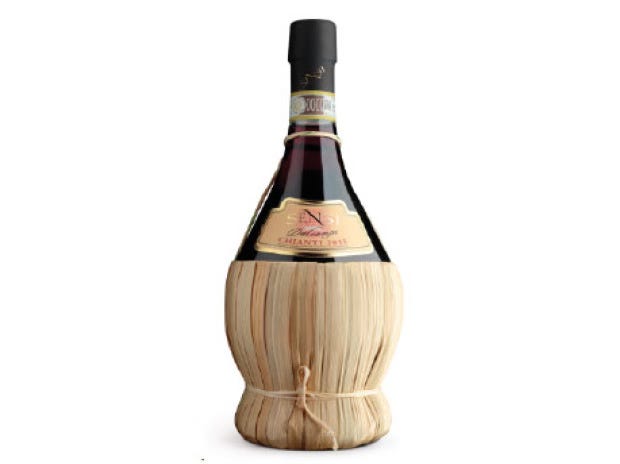Boomer Wines, Roman Wines and How Not To Attract New Consumers
New releases from Garageland, Love & Squalor, Kosta Browne, Reustle, Momtazi Bachinsky & WillaJory
For more than a decade – from 2012 until just recently – I was banned by my two major employers from reviewing all Washington wines. In a misguided effort to shine a light on neglected old Chenin Blanc, I had partnered with a well-known wine company to produce a few hundred cases of wine under a Waitsburg Cellars label. The project died after a few vintages and I received no compensation (other than some wine) for my efforts. What I did get was blacklisted – summarily fired by the Seattle Times and told by my editors at Wine Enthusiast I could no longer review any and all Washington wines.
This took a Trumpian bite out of my income stream, but as is often the case there was an upside – a chance to do a deep, decade-long dive into the wines of Oregon. And now, with complete journalistic independence thanks to Substack, I have returned to covering wines from across the Pacific Northwest. But as I return to reviewing wines from Washington, I feel that I am approaching them from a different place, with a different palate and perhaps a new set of values.
My policy here is to taste everything submitted, and only publish notes on recommended wines. I don’t believe readers want me to waste their time with notes on middling wines, nor do I want to do any damage to wineries already struggling for sales. A recent tasting however sparked thoughts on how Washington wines have or have not kept up with the changing tastes of young consumers.
Should there be any doubt that things have changed I’ll share a quote from fellow Substacker Joe Fattorini. I highly recommend that you follow Joe if you love wine knowledge combined with a dry British sense of irony. Writing today about trying to deal with the new tariffs, Joe notes that “The wine trade is a traditional sort of business. In the past the way you’d deal with a problem like this was by going to a café in ‘Dabillion-sûr-La Plage’ or wherever you lived, drink coffee, shrug your shoulders, and complain that the government isn’t doing anything to help. Obviously modern life has changed all that. So now you make yourself a coffee, go on Bluesky, and give yourself carpal tunnel syndrome complaining that the government isn’t doing anything to help.”
On either side of the Atlantic it’s clear that post-Boomer consumers look at wine quite differently from their parents and grandparents. These days wine is no longer a shiny new pastime, instead just one of many alcoholic (and other) options. Non-alcoholic wines and beers are becoming quite popular. Anti-alcohol sentiment is growing globally. And many younger consumers prefer to support wine businesses whose grape growing and winemaking practices are contributing to the health of the land and mitigating any negative environmental impacts during production, packaging and sales of their wines.
The tasting I mentioned broke too many of the guidelines I would recommend for wineries trying to navigate changing consumer trends. It was a lineup of wines from an established producer in a prestigious Washington AVA. They were expensive – some in triple digit territory – and packaged in thick, heavy, unwieldy glass bottles. Their abv numbers – alcohol by volume – were off the charts. With such super high alcohol the wines were jammy, tannic and short, finishing hot and bitter. Back in the halcyon Robert Parker days they’d probably have gotten huge scores. Not today, and not from me.
While tasting these wines I felt transported back to high end Washington wines from the late 20th century. If they still have their admirers, but I’ll bet they are almost all Boomers. To be clear, there have been and still are wines of finesse and detail made in Washington, even amongst the big reds. I write about them frequently. Wanting to check my palate and look back a few years, I pulled this Betz Family 2011 Père de Famille Cabernet Sauvignon from my cellar.
Remember that 2011 was a cool, difficult vintage, not necessarily destined for great wines. This Cab was simply designated ‘Columbia Valley’ and the label noted 14.5% abv – substantial but not over the top. Upon opening it was aromatic, beautifully balanced and long, almost silky. The finish unfolded generously over minutes, unpacking layer by layer. On the second day it was even better, softer, more aromatic.
My original review over a decade ago noted the blend: 88% Cabernet Sauvignon, 9% Petit Verdot and 3% Merlot; and the abv at 14.1% (more accurate than the 14.5% printed on the label). “Intriguing scents focus upon chamomile and Mediterranean herbs, while the fruit flavors are wild and brambly. Cherry candy and red licorice play broadly across the palate, lingering through a beautifully-balanced and extended finish.” I gave it 95 points – a very high score from me back then. And I’d keep it there today. It proves that Washington can and did and should make red wines in this way – now more than ever.
Maybe it was the springtime garden that also inspired thoughts of regeneration, along with this story that caught my eye this week.
Time magazine reported that a company called Colossal Biosciences has deciphered the dire wolf genome and successfully birthed two males and a female of a species extinct for the past 10,000 years. Next up: a woolly mammoth, due in about 2028. Stay tuned.
As irrelevant as this may seem to the world of wine it led to the thought that some enterprising wine company might make a viable business out of producing updated versions of ancient Persian, Greek and Roman wines. The residues found in amphorae should provide enough information to work up a credible replica. If someone can remake a woolly mammoth I thought, how hard can it be to revitalize an extinct grape variety?
In recent years wines have been sent into space, buried at the bottom of the ocean and in a number of instances all-but-extinct varieties have been revived (Carmenère being one prominent example). Some experiments in Italy have gone the next step and figured out exactly what grapes the Romans were using – specifically Piedirosso and Sciascinoso, ancient vines from the Campania region.
But slavishly following ancient winemaking practices is not going to land you a spot at Trader Joe’s. Consider this spiced wine recipe from Apicius: “Into a copper bowl put six sextarii [a sextarius being roughly a half liter] of honey and two sextarii of wine; heat on a slow fire, constantly stirring the mixture with a whip. At the boiling point add a dash of cold wine, retire from stove and skim. Repeat this twice or three times, let it rest till the next day, and skim again. Then add four ounces of crushed pepper, three scruples of mastich [resin], a drachm each of nard or laurel leaves and saffron, five drachms of roasted date stones crushed and previously soaked in wine to soften them. When this is properly done add 18 sextarii of light wine. To clarify it perfectly, add crushed charcoal twice or as often as necessary which will draw the residue together and carefully strain or filter through the charcoal.” Yum!
Nevertheless, leaving out the honey, pepper, charcoal etc. and honing in on making the best possible wines from some once-extinct ancient grapes could be of more than just academic interest. In a wine world where a lot of the industry seems to be grasping a straws to survive, why not grasp at something stronger – like a fiasco – filled with no longer extinct ancient wine?
Now Back To The Future With Notes From Recent Tastings
Currently owned by the Duckhorn Wine Company, this legendary Sonoma Coast Pinot producer has recently ventured into Oregon. This is my first look at how they handle Oregon fruit. The Willamette Valley bottling is the most widely available. Note that although the 2022 wines were submitted, the 2023 Willamette Valley is what is now on the website. (Note to wineries – please send current vintages!)
Kosta Browne 2022 Willamette Valley Pinot Noir – A compilation of fruit from 10 vineyards, this is a smooth, supple, accessible and tasty wine from this California-based winery. Although it does not show the specificity of single vineyard examples, as a full-bodied and instantly delicious Pinot Noir it’s a success. If there’s a criticism apart from the lack of detail, it’s that the flavors fall away into a sharp, tannic finish. 13.5%; $78 (Willamette Valley) 91/100
Kosta Browne 2022 Eola Springs Vineyard Pinot Noir – This well known Eola Hills vineyard is widely represented across a great number of Oregon Pinot Noirs. Here the fruit is given 50% new oak, which firms up the finishing tannins. Broad flavors are front and center with a burst of strawberry and raspberry fruit. 14.1%; $105 (Willamette Valley) 90/100
Kosta Browne 2022 Shea Vineyard Pinot Noir – Grapes from the Shea vineyard, which provides fruit to an honor roll of great Oregon vintners, is featured here. While many Oregon wineries are cutting back on new French oak exposure, here it’s up to 40% and the toasty highlights tend to overtake the rich, ripe black fruits that exemplify Shea bottlings. It’s a style choice, but one that attenuates the finishing details. 14.1%; $105 (Willamette Valley) 90/100
Love & Squalor 2021 Dry Riesling – If you like your Riesling bone dry with the sort of lip-smacking juiciness that is as close to sucking on a lemon as a wine can be, here’s your bottle. And I mean that in a good way. Beyond the lemon you’ll find grapefruit, tangerine, a squeeze of lime… you get the picture. Dry Rieslings can be so dry the fruit feels desiccated; not here. This wine is bursting wide open with fruit, which carries the flavors bright and bold through a lingering finish with a hint of butter. 110 cases; 11%; $21 (Willamette Valley) 95/100
Garageland 2023 Pinot Noir – The Garageland Pinot is a multi-vineyard blend made, says winemaker Matt Berson, “as an homage to all of the artisans… who toil away behind nondescript roll-up garage doors in warehouse districts across the world”. Bravo. I like the sentiment, and I love the wine. Value Pinot that is made with genuine attention to the qualities that define the grape is a rare thing. You can find plenty of cheap Pinots with unripe fruit, green tannins, added sugar and who knows what else in the mix. But real Pinot, bursting with bright red fruits and supported with punchy acids, Pinot made out of respect for the grape and priced for the hard-working folks who most likely never taste a bottle of wine that costs more than this, deserves applause. 1031 cases; 13.5%; $22 (Willamette Valley) 91/100
Love & Squalor 2023 Gamay Noir – This is about as pretty a bottle of Oregon Gamay as I’ve ever tasted. There’s an aromatic mix of floral spices that is beguiling, and wraps the crushed raspberry fruit in a sweet sensory wreath. The fruit bulks up in the mid-palate, adding flavors of plum and pie cherry as it sails into the finish. On the second day it turns a little leathery, so drink it now while it’s fresh, spicy, balanced and perfect for immediate enjoyment. 293 cases; 13%; $32 (Willamette Valley) 93/100
Love & Squalor 2022 Pinot Noir – A sexy blend of grapes from eight Willamette Valley vineyards, including four in different sub-AVAs, this benefits from what is one of the finest vintages in several years. Bright red fruits, sassy acids, a touch of chocolate and punchy alcohol all combine to make this a fresh, penetrating young wine with mid-level aging potential. It’s no mean feat to pull together so many disparate sources and craft a complete, full-bodied and flat out delicious wine. Done here, and done well. 1400 cases; 14%; $32 (Willamette Valley) 92/100
Love & Squalor 2021 Reserved Pinot Noir – Held back prior to release, this is the newest and latest Reserved from L&S. Four barrels are selected for the blend, yielding a wine with a darker profile of black fruits touched with highlights of charred wood. At the core is a generous serving of black cherry fruit, balanced against proportionate acids and ripe tannins. Tasted with the winery’s regular Pinot (from 2022), this is the bigger and darker wine, a wine I’d drink over the next half decade. I look forward to the 2022 Reserved. 100 cases; 14%; $48 (Willamette Valley) 92/100
Momtazi Bachinsky 2017 Pinot Noir – From the biodynamic Momtazi vineyard, this new release from Naseem Momtazi Bachinsky follows the practice of the family’s Maysara brand and holds back wines for release until they are at or near maturity. With vines of this caliber the practice makes sense, and this fits into the portfolio well in terms of structure and flavor. Strawberry fruit, a sprinkling of dried herbs and drying, tea-like tannins start it off, balanced against sharp acids. It holds together very well on day two, suggesting that it should cellar well for a decade or longer. 330 cases; 12.8%; $60 (Willamette Valley) 92/100
Two wines I previewed a year ago are now released. Both offer exceptional value. Here are my updated notes.
Reustle 2023 Green Lizard Grüner Veltliner – Rich and mouthcoating, still fresh and juicy, this delicious wine adds volume mid-palate with a burst of ripe citrus, white peach and jicama. Subtle minerality and dappled notes of fresh herbs keep adding to the complexity. Impressive length all the way through. Reustle can fairly claim to produce the finest Grüner Veltliners in the Northwest, if not the country. 402 cases; 12.5%; $39 (Umpqua Valley) 94/100
Reustle 2022 Winemaker’s Reserve Pinot Noir – This is a mix of clones, more than half Pommard. The fruit is light and expressive, with dried roses, candied raspberries, chocolate orange peel and a vein of butterscotch. The long, smooth finish adds a touch of mocha. Stephen Reustle and associate winemaker Wade Smith have really upped the quality on their Pinots, and this luscious, lovely bottle is a delight. 400 cases; 13.4%; $49 (Umpqua Valley) 92/100
WillaJory 2023 Pinot Noir – A new project from Howard Rossbach (founder of Firesteed), this is sourced from his Erratic Oaks vineyard, whose neighbors include Freedom Hill. It’s smooth and approachable, with front-loaded mixed berry flavors and soft, seamless tannins. A good every day Pinot at an affordable price. 13.2%; $18 (Willamette Valley) 90/100
Music Update – I have set up a music site on Bandcamp with recordings of original songs from my decades as a singer/songwriter. I’ll be adding material on an ongoing basis. I promise this is not another plea for financial support. I don’t even have that part of the website activated. I’m looking for ears, not dollars. If you are a musician and want to record any of this material, give me a shout and we’ll figure it out.
Note to Wine Marketers – If you are the person tasked with sending wines to media, please let everyone at the winery know if and when the wines were sent to me, and encourage them to subscribe to this Substack. I do not send out alerts when reviews are posted. Subscribe – it’s free – and when their reviews are published they will be seen.












Paul, you are a treasure!! The consistency and accuracy of your taste is so valuable!!! Keep it coming😊
Thank you for reviewing our friends at Love & Squalor to prove that we urban wineries can make great wines! :)